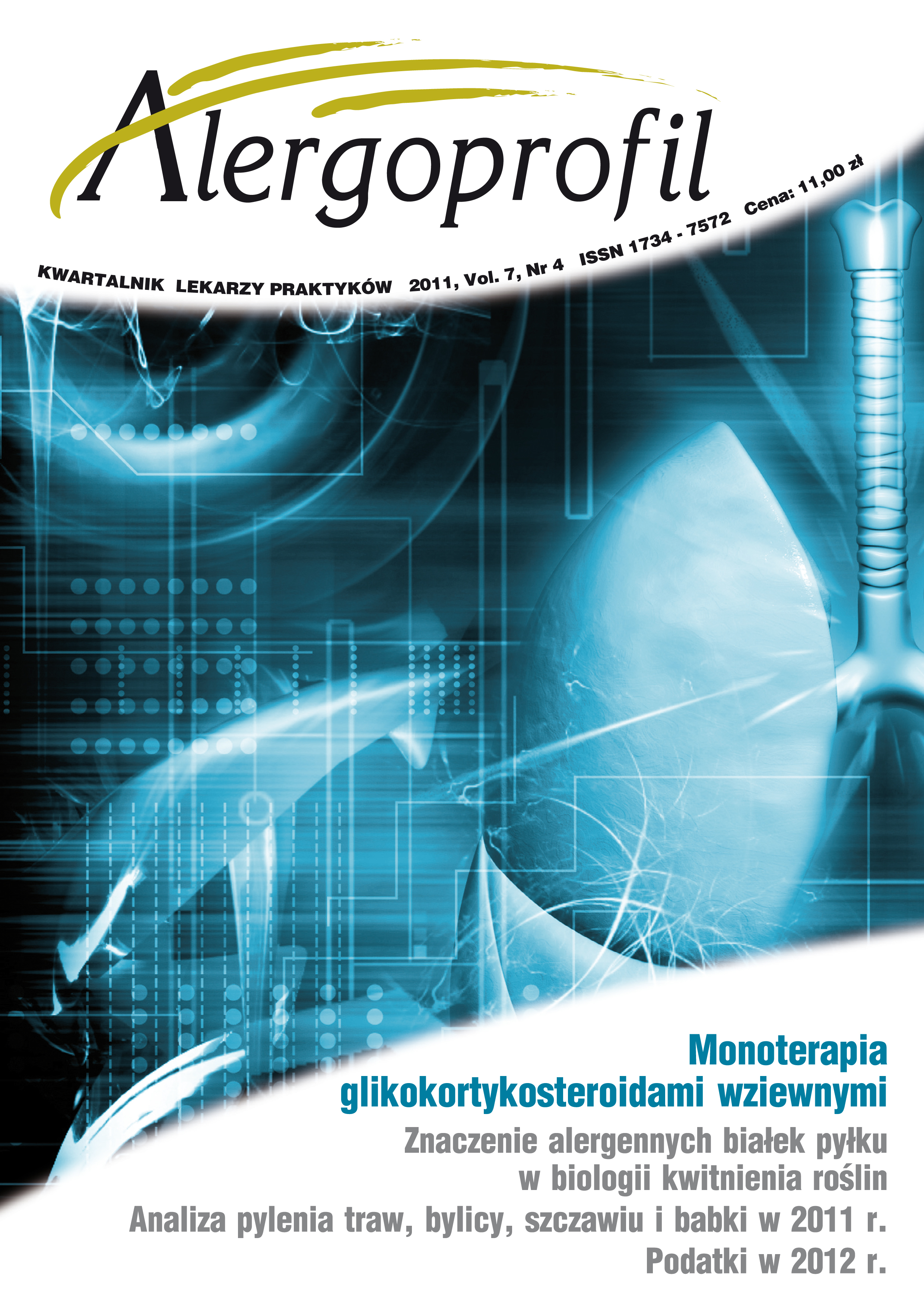Znaczenie alergennych białek pyłku w biologii kwitnienia roślin
##plugins.themes.bootstrap3.article.main##
Abstrakt
Alergenne białka ziaren pyłku uczestniczą w kilku etapach interakcji pyłek–słupek, przede wszystkim w biochemicznej reakcji rozpoznawania. Białka płaszcza pyłkowego biorą udział w przyklejaniu się pyłku do komórek znamienia słupka. Białka intyny i cytoplazmy uwalniają się w czasie hydratacji pyłku i umożliwiają wzrost łagiewki pyłkowej.
Pobrania
##plugins.themes.bootstrap3.article.details##

Utwór dostępny jest na licencji Creative Commons Uznanie autorstwa – Użycie niekomercyjne – Bez utworów zależnych 4.0 Międzynarodowe.
Copyright: © Medical Education sp. z o.o. This is an Open Access article distributed under the terms of the Attribution-NonCommercial 4.0 International (CC BY-NC 4.0). License (https://creativecommons.org/licenses/by-nc/4.0/), allowing third parties to copy and redistribute the material in any medium or format and to remix, transform, and build upon the material, provided the original work is properly cited and states its license.
Address reprint requests to: Medical Education, Marcin Kuźma (marcin.kuzma@mededu.pl)
Bibliografia
2. Chapman L.A., Goring D.R.: Pollen-pistil interactions regulating successful fertilization in the Brassicaceae. J. Exper. Bot. 2010, 2: 1-13.
3. Heslop-Harrison Y., Shivanna K.R.: The receptive surface of the angiosperm stigma. Ann. Bot. 1977, 41: 1233-1258.
4. Hesse M.. Pollenkitt in Relation to Pollination Ecology. Calicut Univ. Res. Journ. 1980, 1: 29-33.
5. Iwanami Y., Sasakuma T., Yamada Y.: Pollen: Illustrations and scanning electron-micrographs. Kodansha, Tokyo; Springer Verlag, Berlin, Heidelberg 1988.
6. Knox R.B., Heslop-Harrison J.: Pollen-wall proteins: electron-microscopic localization of acid phosphatase in the intine of C. vernus. J. Cell Sci. 1971, 8: 727-733.
7. Knox R.B., Suphioglu C.: Environmental and molecular biology of pollen allergens. Trends Plant. Sci. 1996, 1(5): 156-164.
8. Marquez J., Seoane-Camba J.A., Suarez-Cervera M.: Allergenic and antigenic proteins released in the apertural sporoderm during the activation process in grass pollen allergens. Sex. Plant. Reprod. 1997, 10: 269-278.
9. Matthiesen F., Ipsen H., Løwenstein H.: Pollen allergens. W: Allergenic pollen and pollinosis in Europe. D’Amato G., Spieksma F.Th.M., Bonini S. (red.). Blackwell Sci. Publ., London 1991.
10. Murphy D.J.: The extracellular pollen coat in members of the Brassicaceae: composition, biosynthesis, and functions in pollination. Ptotoplasma 2006, 228: 31-39.
11. Rodkiewicz B., Śnieżko R., Fyk B., Niewęgłowska B., Tchórzewska D.: Embriologia Angiospermae, rozwojowa i eksperymentalna. Wyd. UMCS, Lublin 1996.
12. Tedder A., Ansell S.W., Lao X., Vogel J.C., Mable B.K.: Sporophytic selfincomatibility genes and mating system variation in Arabis alpina. Ann. Bot. 2011, 108: 699-713.
13. Thanikaimoni G.: Pollen apertures: form and function, pollen and spores: form and function. The Linnean Society of London, 1986: 119-136.
14. Thompson P.J., Stewart G.A., Samety J.M.: Alergeny i zanieczyszczenia. W: Alergia. Holgate S.T., Church M.K., Lichtenstein L.M. Wyd. Czelej, Lublin 2003.

